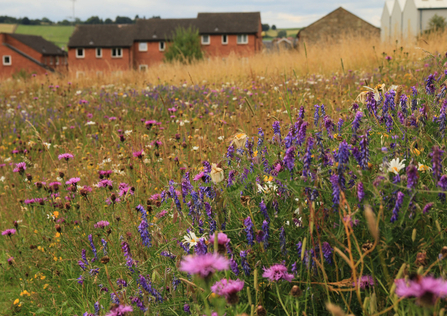I travel around the country and see isolate pockets of people and wildlife, segregated into ghettos. But then there is a ray of hope - when a project manages something special.
Remapping and Reconnecting Britain’s Fragmented Wildlife
Back in 2010 I read Lawton’s famous review of Britain’s protected areas, Making Space for Nature, and was moved by the first loud shouts about the importance of connectivity between sites as the sites themselves. So moved, in fact, that I wrote a book about it - Linescapes, Remapping and Reconnecting Britain’s Fragmented Wildlife. I argued that we need a revolution in the way we manage our land - and that we can find allies in unexpected places. The obvious demons of the piece, like roads, can be worked into an ecological network if we are willing and brave enough to take nature seriously.
And now I find that, on the wonderfully revolutionary day of 1st May, the Wildlife Trusts have launched their brilliant campaign for a Nature Recovery Network. They are putting into action what I had written about - making an articulate and urgent case for what can best be described as joined up thinking.

The vision they present for 2040 of a green, happy and healthy Britain is the sort of dream I have on a good day. The great thing about this is that it is not too far fetched - this is within reason. In fact it is beyond reason to think of managing our world in any different sort of way.
I travel around the country and see isolate pockets of people and wildlife, segregated into ghettos. But then there is a ray of hope - when a project manages something special.
As I found as I explored the linear features of Britain while researching Linescapes - there is so much that can be achieved. Hedges can be worked back into a functioning ecosystem if we start to value them properly, drystone walls need care and management to return to their function as upland arteries and sanctuaries for wildlife, canals already support wildlife despite the concrete and graffiti and need to be knitted into the other networks, railway lines can be calm and managed with nature in mind and the road network (yes, I know that over 100,000 hedgehogs are killed each year) can, if we are courageous enough to invest, work as part of a Nature Recovery Network too - the ‘soft estate’, the verges, are already home to over 800 species of flowering plant.

(C) Keiron Huston
It is easy to be pessimistic. I often am as I travel around the country and see isolate pockets of people and wildlife, segregated into ghettos. But then there is a ray of hope - when a project manages something special. The National Grid working with Worcester Wildlife Trust, for example, to create a Natural Grid - using the paths of the power lines to create highways for wildlife. So it is with rather a warm feeling of progress being made that I see the launch of the paperback of Linescapes into the world on 3rd May. I hope that we can work together to create a better world for us and for wildlife. We cannot do that by sitting in isolated boxes and working alone - it is not just nature that needs connecting up - it is all of us. The campaigners at Buglife, Plantlife, Froglife, the RSPB, British Hedgehog Preservation Society and many more are all working towards a similar end - so let us rally around a central call and work to unfragment this wonderful country.
Hugh Warwick
Linescapes, Remapping and Reconnecting Britain’s Fragmented Wildlife is out now in paperback.

